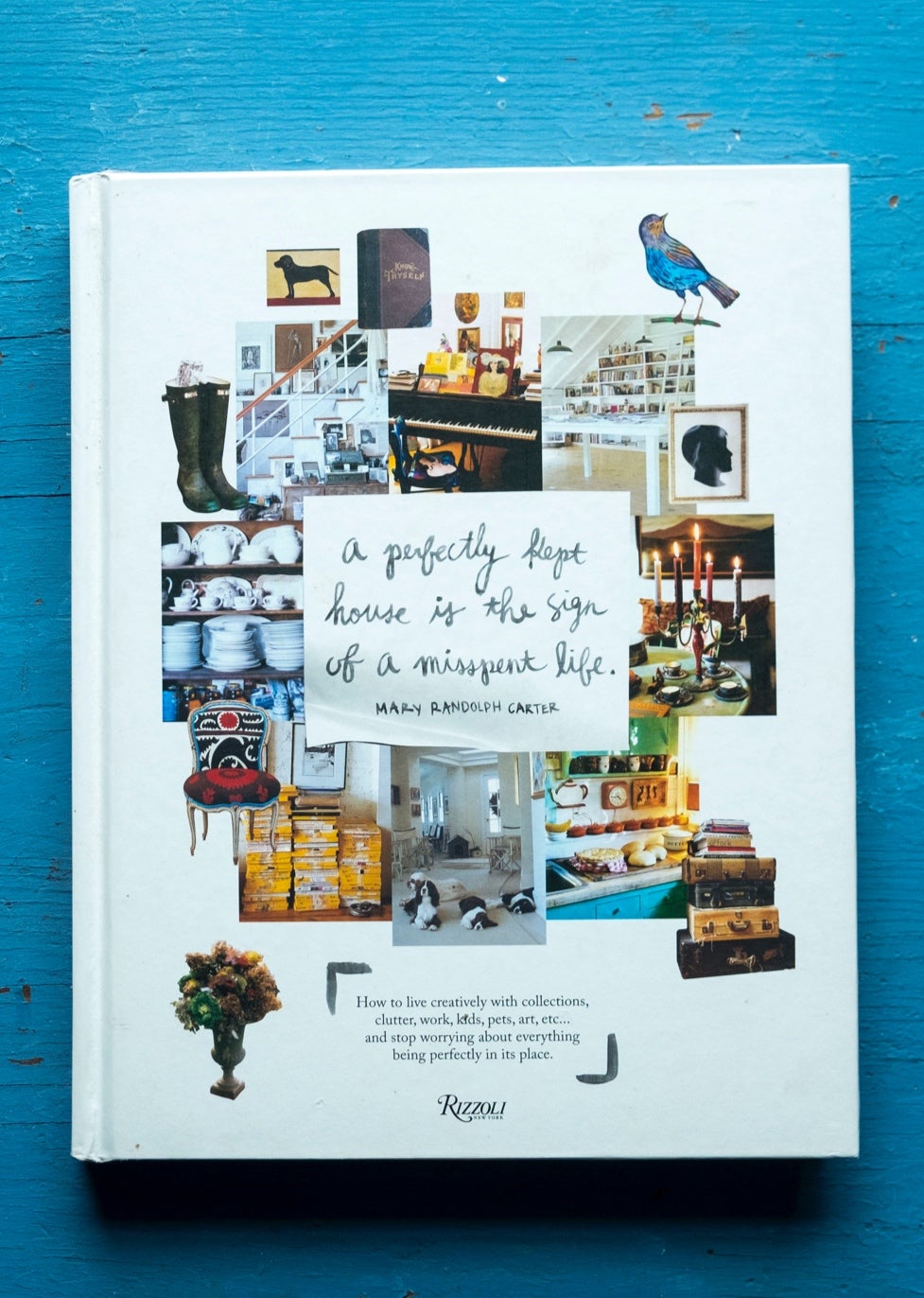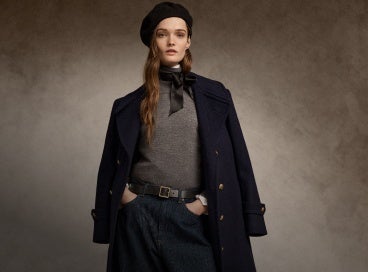
One childhood Christmas, Mary Randolph Carter and her eight younger siblings picked out a welcome mat that, she says, “expressed what we felt was our family motto.” The motto became the title of one of Carter’s most beloved books, A Perfectly Kept House Is the Sign of a Misspent Life (Rizzoli), which celebrates its 10th anniversary this year. Inspired by her childhood home—a 17th-century house in Virginia—which she shared with her parents and eight younger siblings, the book is an ode to the comfortable and lived-in, a home filled with meaning, memories, and warmth. Below, a Q&A with the author, who currently oversees Ralph Lauren publishing, on her signature artfully cluttered aesthetic, love of antiques and vintage, and design philosophy.
What kinds of spaces inspired the book?
I thought about my own childhood home in Virginia, which was an old 17th-century house filled with personal things. I was always drawn to the beautifully, artistically cluttered studios of Picasso or Alexander Calder. But it was a philosophy about living, which was just about making people feel at home in your home. I’m inspired whenever I walk into a home that shows its heart, whether it’s a refrigerator filled with children’s artwork or a wall of photographs or books.

Lots of magazines feature pristine houses that often fail to resonate as inviting or soulful. How would you style the rooms so that they didn’t look so sterile?
My taste has always been very compatible with Ralph Lauren’s. Whether it was fashion or interiors, Ralph’s philosophy was always about making it feel lived-in and real. If you looked at a Ralph Lauren room collection, sometimes the bed was slightly messed up, there were piles of books on a chair, there were dogs, children—signs of life. If there were no people in the picture, you felt that they had just left the room. Mood is so important, too. I’ve always felt those photographers who were able to use some natural light or mimicked natural light, to me, gave a mood.
In your book, there is this quote: “Beautiful homes bring up beautiful people in every sense of the word.” What does this mean to you?
One of the women I write about in the book shares her home very intimately with her children and even lets them draw on the couch. Some people would say that’s going too far. But if a home has a soul and a personality, then you do have a leg up in becoming a more beautiful person because you’ve grown up in a place that respects the things you love.
What is it about old things that you love?
I love things that have a history and a memory and a patina and age to them. I’ll buy a set of storybooks that I remember on the shelves of my grandfather’s library, for example. I’m definitely a sucker for surrounding myself with things that evoke personal memories. It’s about trying to recreate those things from the innocent time of childhood that made us so happy.

What are the absolute essentials for making a home comfortable but still aesthetically pleasing and stylish?
Number one would be books. Even though I do have an iPad, I don’t think I’ll ever give up my books. I just love to fill my walls with an eclectic mix of paintings and photographs, or an old flag. I have a new store-bought sofa, but I always camouflage it a little bit with disparate textiles and old blankets so that it’s a little distinctive. Lighting in an apartment builds comfort instantly, and of course plants. Right now, I have an old earthen crock of hearty succulents that thankfully take care of themselves.
What is the difference between clutter and a mess?
I talk about clutter as being sort of the poetry of our homes, but sometimes it can definitely get out of control. I just moved into a new office. I walked into it the other day and everything was helter-skelter. I was trying to write something, and finally I just turned off my computer and said, “OK, I can’t work this way.” I had to kind of move things around and just bring a little order to all the things in that office. To live happily with a lot of collections at work or home, it’s important to impose order and discipline from time to time.

How do you think a childhood home shapes an adult life?
I was personally shaped by my home, less by the furniture and the paintings and more by the spirit of the place. When I came to New York, I brought some totems—like an old blue rocking chair—to remind me of that spirit. But those are superficial things. The things you carry in your heart are the things that shape your life.
How important is it to have a physical place to call home?
I ardently, heartfelt-ly believe in creating a place that you can call your home. Whether you are single or married, living with your dog or parakeet, are work-obsessed, I believe in a nest. It’s a basic human need. To be able to come home to something that makes you feel more yourself, and makes you feel secure and comfortable, doesn’t have to do with the location or the amount space. It comes back to allowing yourself to live with things that mean something to you and that you love. The most grounded, happiest, and confident people have found that place. Whether it’s a tree house or a little cabin or whatever, make it lived-in and personal.

- Courtesy of Mary Randolph Carter
- Courtesy of Carter Berg







